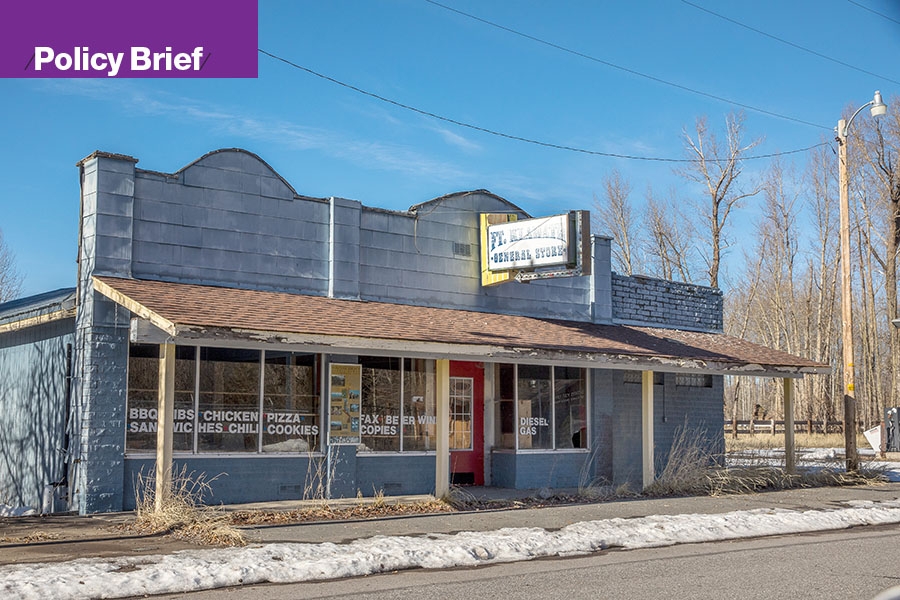Jennifer Groth, director of policy and partnerships at Rural Development Initiatives, Inc., talks about what federal investment could do for rural Oregon.
After decades of disinvestment and deferred maintenance, rural Oregon is now seeing some opportunity to fix downtown buildings, fill potholes, improve internet access and create the community vitality that armies of volunteer leaders have doggedly been working toward for years.
Federal money is coming to rural Oregon — if we can navigate the arcane rules, convoluted grant-application instructions, and significant local match dollars required to obtain and manage it.
If you’ve never had the opportunity to work with government contracts or grants, please understand that the accountability necessary to make sure your tax dollars are spent responsibly translates into a tremendous amount of red tape — the application itself typically consists of more than a hundred pages of explanation, documentation and financial accountability. After the grant or contract is awarded, regular reporting is required to make sure the funds are spent as intended. All of this takes specialized expertise, experience with government processes and hours upon hours of time.
What does this mean for rural places? What we see is that communities that already have resources are more likely to receive federal funds than those that don’t. Wealthy communities have staff with time and experience to write proposals, and financial experts to keep track of awarded dollars in the special way the government prescribes.
You may be asking yourself, what does all this federal minutiae have to do with growing rural economies? Here’s what rural-serving organizations know, based on our long experience in the farthest reaches of Oregon: We need to create an environment that supports local small businesses and aspiring entrepreneurs, also called community entrepreneurial ecosystems. What does this look like? It includes physical infrastructure like broadband, storefronts, water and sidewalks. It includes community support like accessible capital, business-planning and growth expertise, and peer-support groups. And it includes an awareness that every entrepreneur is different and has their own set of needs. Government money can help build a foundation for this work.
So how do we get help to those communities that don’t have the staff or expertise but almost certainly have the greatest need?
A group of rural support providers in Oregon — including philanthropy, economic-development professional and nonprofit community organizations — have been meeting to talk about solutions, and we are putting our ideas to work.
Because American Rescue Plan and Bipartisan Infrastructure Law money is becoming available as we speak, the question we’re asking is: What can we do that provides help fast? Right now, our group is (1) pushing out lots of information on social media and to our rural networks; (2) spending time with rural leaders who ask for our help; (3) creating centralized lists of available grants and grant writers with federal experience; and (4) accumulating dollars that rural places can use for match funding, because many grant applications require that local communities put up money to get money, which is a major hurdle for small and remote places.
While these efforts will provide some help, we need to solve the long-term problem: Rural Oregon suffers from a chronic lack of resources for their community-vitality work. There are too few people in rural areas with the specialized skills required to access federal dollars.
One step in the right direction is the Oregon Rural Capacity Fund, created by the Legislature in 2021. Rural champions on both sides of the aisle have been talking about this for years: There is a strong need for specific support to help small communities pay for grant writing and other skilled resources related to accessing federal funds. The legislation provided $500,000 for this fund, which is a great start but will not last long. The Ford Family Foundation, a steadfast supporter of rural Oregon, is matching this investment, along with support for grant writer training. Learn more about their efforts at tfff.org/Pathways-Securing-Rural-Federal-Funding.
So in order to get federal funding in the first place, and to maximize the impact of these dollars, rural communities need expert technical assistance. As we emerge from the pandemic and look for ways to support people, businesses and communities that want to not only recover but become stronger, we have to understand that they don’t just need money to pull themselves up, they need grant writers, accountants, lawyers, engineers and other mentors with special training to teach skills. Growing small businesses need to be connected to others like them to trade ideas, brainstorm solutions and just provide emotional support.
Most importantly, Oregon needs to focus its resources to make sure these skills are embedded and sustained in rural communities. Rural community leaders don’t need outsiders to swoop in, dazzle them with urban-created models that have little application to small places, and leave. We need to work alongside rural people to understand their vision, goals and needs — and help rural Oregon achieve its vision for the future in a way that makes the whole state a better place to live.
Jennifer Groth is the director of policy and partnerships at Rural Development Initiatives, Inc.
To subscribe to Oregon Business, click here.






